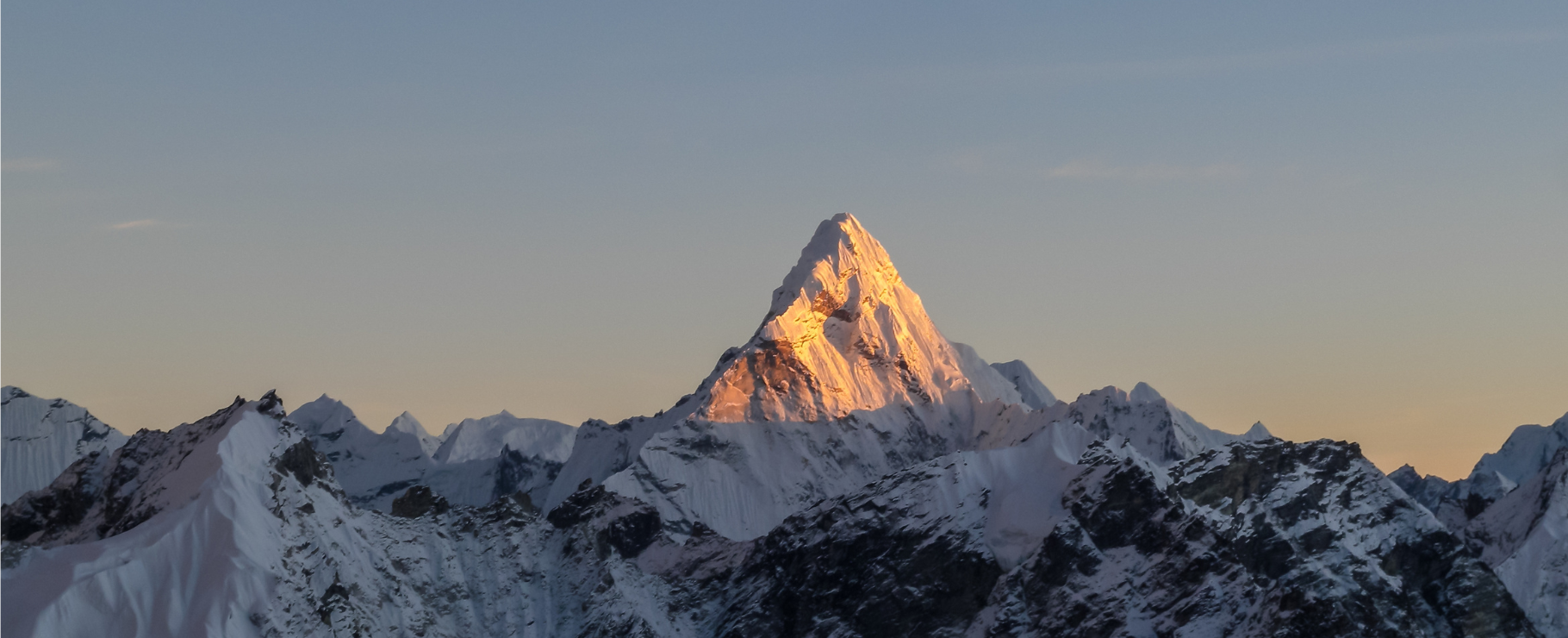Home » The five summits you can’t miss in Asia
The five summits you can’t miss in Asia
From snow-capped giants to sacred volcanoes: a tour of Asia's most fascinating peaks
Asia is a continent of extreme contrasts. From the vastness of the Siberian plains to the tropical rainforests of Southeast Asia, the deserts of the Middle East, and the highest peaks on the planet, this continent offers a geographical diversity that makes it a true paradise for mountaineering enthusiasts. At Top Summits of the World, we invite you to discover five essential peaks in Asia that stand out not only for their altitude or technical difficulty, but also for their natural beauty, cultural significance, and geographical uniqueness. Whether you’re an experienced mountaineer or a curious hiker, these mountains have something special to offer.
Join us on this route through the Asian continent, where we will explore the majesty of Everest, the spirituality of Mount Fuji, the mystique of Damavand, the vertical jungle of Fan Si Pan and the desert wonder of Jabal Umm ad Dami.
1. Everest: The ultimate challenge of mountaineering
Everest needs no introduction. It’s the highest peak on the planet and a life goal for any mountaineer. But beyond the record and the challenge, Everest represents an inner journey, a test of humility in the face of nature at its most extreme. Climbing Everest means living with ice, rock, wind, and fear for weeks. But it’s also experiencing the warmth of the Sherpas, walking ancient trails, and seeing the world from a life-changing perspective.
Everest Highlights:
- Location: Located between Nepal and Tibet, in the Himalayas, Everest reaches 8,848.86 meters. Its imposing presence dominates the landscape of the Solukhumbu region and is part of Sagarmatha National Park, a UNESCO World Heritage Site.
- Main Route: The best-known route starts in Nepal, via Everest Base Camp. From there, you pass landmarks such as the Khumbu Icefall, Camp 2 (6,400 m), the dreaded South Col, and the summit, where the air is so thin that every step is a struggle. There is also the northern route, from Tibet, which is more technical and less traveled.
- Challenge: Everest is not the most technically difficult mountain, but it is certainly one of the most dangerous. Avalanches, sudden storms, glacial crevasses, and altitude sickness are just some of the threats. Reaching the summit requires acclimatization, high-level logistics, a large financial investment… and absolute respect for the mountain.
- Natural attractions: Thousand-year-old glaciers, colossal ice seracs, neighboring peaks like Lhotse and Nuptse, and the immensity of the Himalayas are all part of the spectacle. Furthermore, the path to Everest itself is a spiritual journey: Buddhist monasteries, prayer wheels, and the sound of mantras accompany every step.
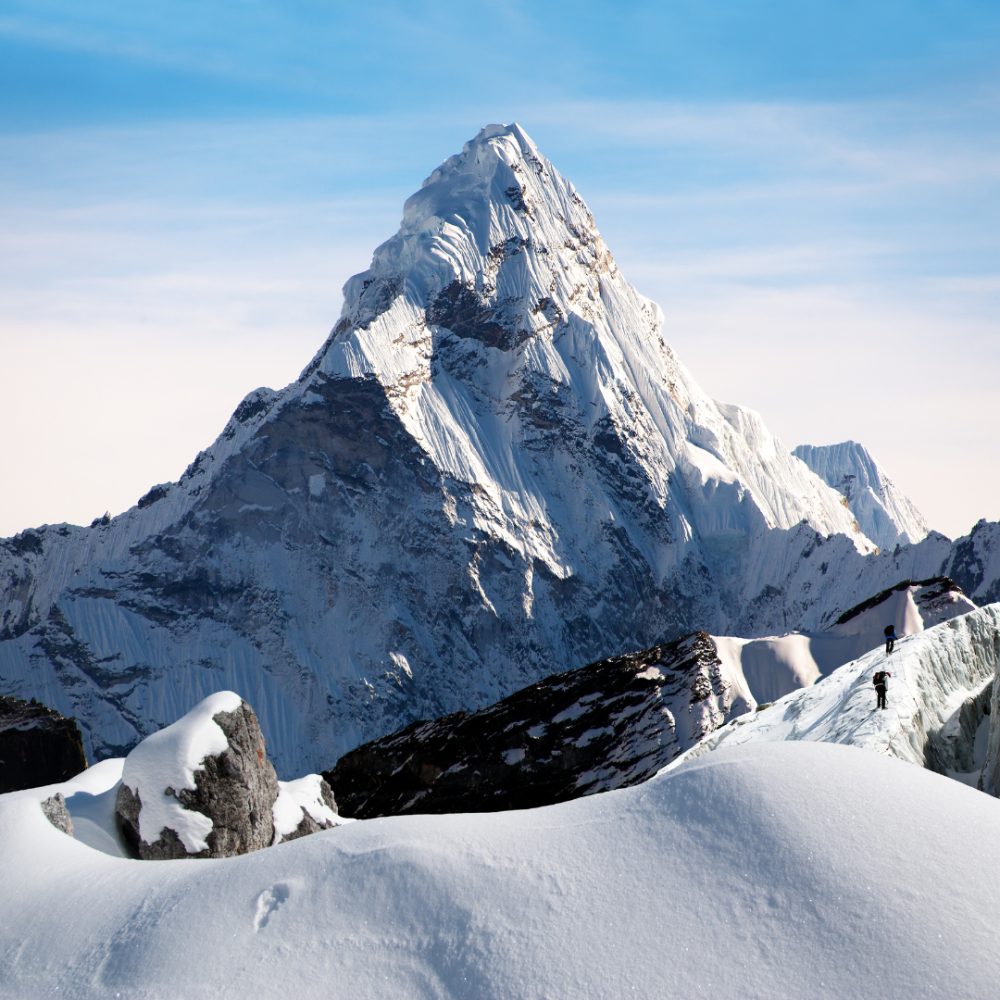
2. Mount Fuji: Volcanic perfection (Japan)

Few mountains in the world carry as much symbolic significance as Mount Fuji. It is the embodiment of traditional and modern Japan, a constant presence in its art, religion, and literature. Climbing Mount Fuji is not just a hike; it’s an almost ritualistic act, an encounter with the aesthetics of silence and simplicity. Although it is not the highest or most difficult mountain, its symmetry and natural setting make it unforgettable.
Highlights of Mount Fuji:
- Location: Mount Fuji is located on the island of Honshu, near the city of Fujinomiya, about 100 km from Tokyo. At 3,776 meters, it is the highest point in Japan and a national symbol revered by tourists and pilgrims alike.
- Main Route: There are four routes to climb Fuji, the most popular being the Yoshida Trail, accessible from Station 5 of the Fuji Subaru Line. Most hikers make the ascent at night to witness the “Goraikō,” the sunrise seen from the summit, a magical experience.
- Challenge: Although no technical equipment is required, Fuji should not be underestimated. The rapid change in altitude, exposure to wind and cold at the summit, and the uneven volcanic terrain mean many arrive exhausted. Furthermore, the high influx of visitors in summer can detract from the experience if not planned well.
- Natural Attractions: Fuji is surrounded by lakes, forests, and temples. From its summit, you can admire the volcanic landscape of Fuji-Hakone-Izu National Park. Its perfect cone, covered in snow in winter and flanked by clouds at sunset, has inspired artists like Hokusai for centuries.
3. Damavand: The Guardian of Persia (Iran)
Imposing, solitary, and mystical, Damavand is much more than Iran’s highest mountain. This sacred volcano has witnessed thousands of years of Persian history and is the protagonist of national myths and legends. It embodies the resilience, faith, and adventurous spirit of the Iranian people. To climb Damavand is to traverse lunar landscapes, breathe sulfur, and gaze at the world from a pedestal of lava and snow.
Damavand’s Highlights:
- Location: Damavand, at 5,610 meters, rises in northern Iran, within the Elburz mountain range, about 70 km from Tehran. It is the highest volcano in Asia and a geographical and spiritual landmark in the country.
- Main Route: The most frequently used route begins in the village of Polur and ascends along the southern slope. Several camps are set up along the way (Goosfand-Sara and Bargah Sevom) before the final assault. Other routes, such as the western or northeast routes, are more solitary and technical.
- Challenge: Damavand requires good acclimatization and mental strength. Although it doesn’t present major technical difficulties, altitude sickness, steep slopes, and loose volcanic terrain can be disorienting. The smell of sulfur at the summit can also be uncomfortable.
- Natural Attractions: From the summit, you can see a sea of clouds covering the Iranian lowlands. During the climb, you will cross lava flows, hot springs, fields of wildflowers, and unique geological formations. Damavand is also famous for its presence in Persian literature, as a symbol of freedom and resilience.

4. Fan Si Pan: The green roof of Indochina (Vietnam)
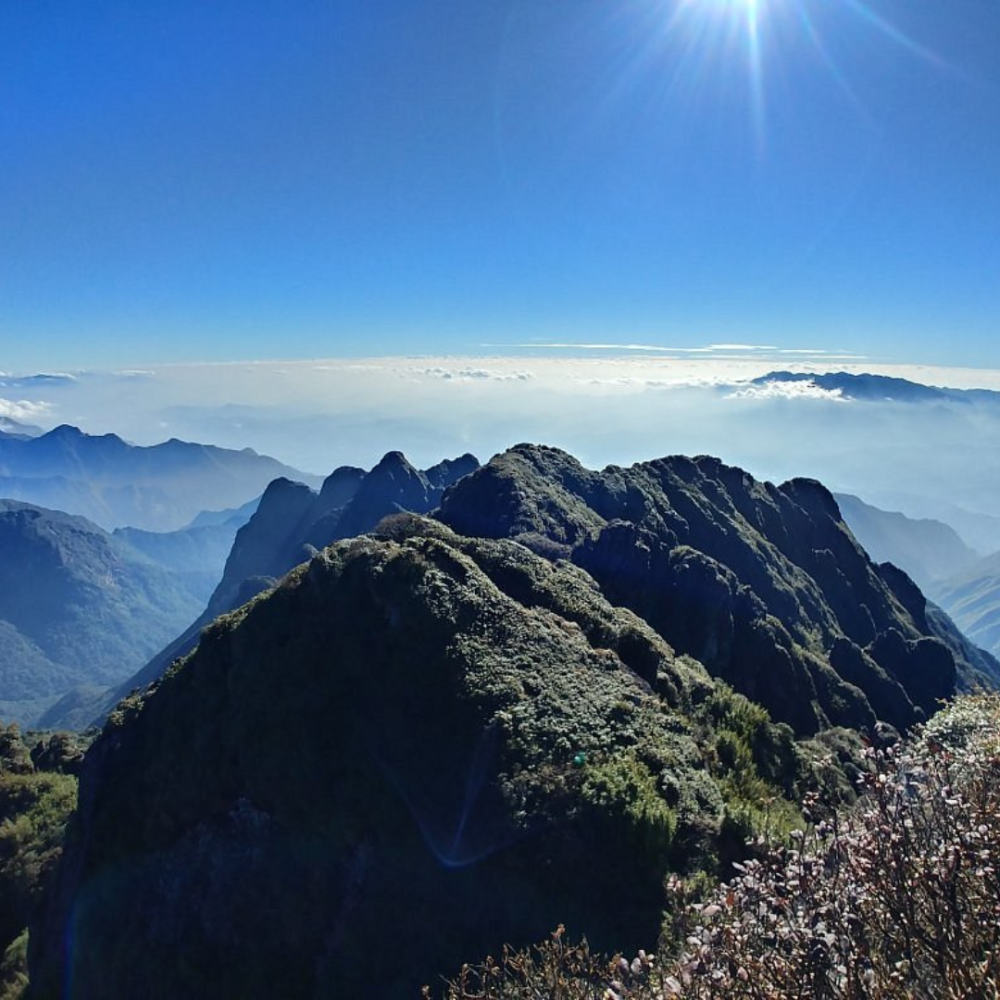
Climbing Fan Si Pan is like entering a world where the jungle seems endless. Here there are no glaciers or snow, but rather humidity, dense vegetation, and a vibrant energy emanating from the earth. It is a mountain that eludes the visitor, hidden among clouds and constant fog. But those who conquer it discover a rich ecosystem and a connection to the earth that few peaks offer.
Highlights of Fan Si Pan:
- Location: Fan Si Pan is located in northern Vietnam, near the town of Sa Pa, within Hoàng Liên National Park. At 3,147 meters, it is the highest peak in Vietnam and the entire Indochina Peninsula.
- Main Route: The most popular climb begins in the village of Sa Pa and crosses the national park. There are two- or three-day routes, traversing jungles, steep passes, bamboo, and wet terrain. Although a cable car now exists to the summit, many still prefer the traditional ascent.
- Challenge: Although it doesn’t require technical skills, Fan Si Pan is physically demanding. The heat, humidity, sudden downpours, and slippery terrain make it a constant challenge. It’s essential to have good footwear and a local guide if you’re unfamiliar with the area.
- Natural Attractions: This mountain is a true biological paradise: rare orchids, tropical butterflies, colorful birds, and endless views of mist-covered mountains. From the summit, on clear days, you can see the entire Sa Pa Valley and the surrounding rice terraces.
5. Jabal Umm ad Dami: A hidden treasure in the Jordanian desert
Far from the beaten track, between the silence of the dunes and the reddish walls of Wadi Rum, rises Jabal Umm ad Dami, the highest mountain in Jordan. It is not a giant in altitude, but its isolation, arid surroundings, and its connection to Bedouin culture make this peak a hidden gem for many. It is the perfect peak for seekers of endless horizons and clear skies.
Highlights of Jabal Umm ad Dami:
- Location: Located in the far south of Jordan, very close to the border with Saudi Arabia, Jabal Umm ad Dami reaches 1,854 meters. It is part of the spectacular landscape of the Wadi Rum Desert, a World Heritage Site.
- Main Route: The ascent starts from the Bedouin Base Camp in Wadi Rum. The route crosses sandstone canyons and rocky slopes, with no clear signage. A local guide is essential, both for safety and for the cultural value it provides.
- Challenge: This is not a technically difficult mountain, but the extreme heat, lack of shade, and orientation among rocks require caution. The ascent can be completed in half a day if you start early.
- Natural Attractions: From the summit, you can see the Saudi Arabian Desert, the red granite massifs of Wadi Rum, and even the Red Sea in the distance. The sunset here is like no other: golden light, long shadows, and the echo of the desert. Sleeping in a tent under the starry sky completes the magical experience.
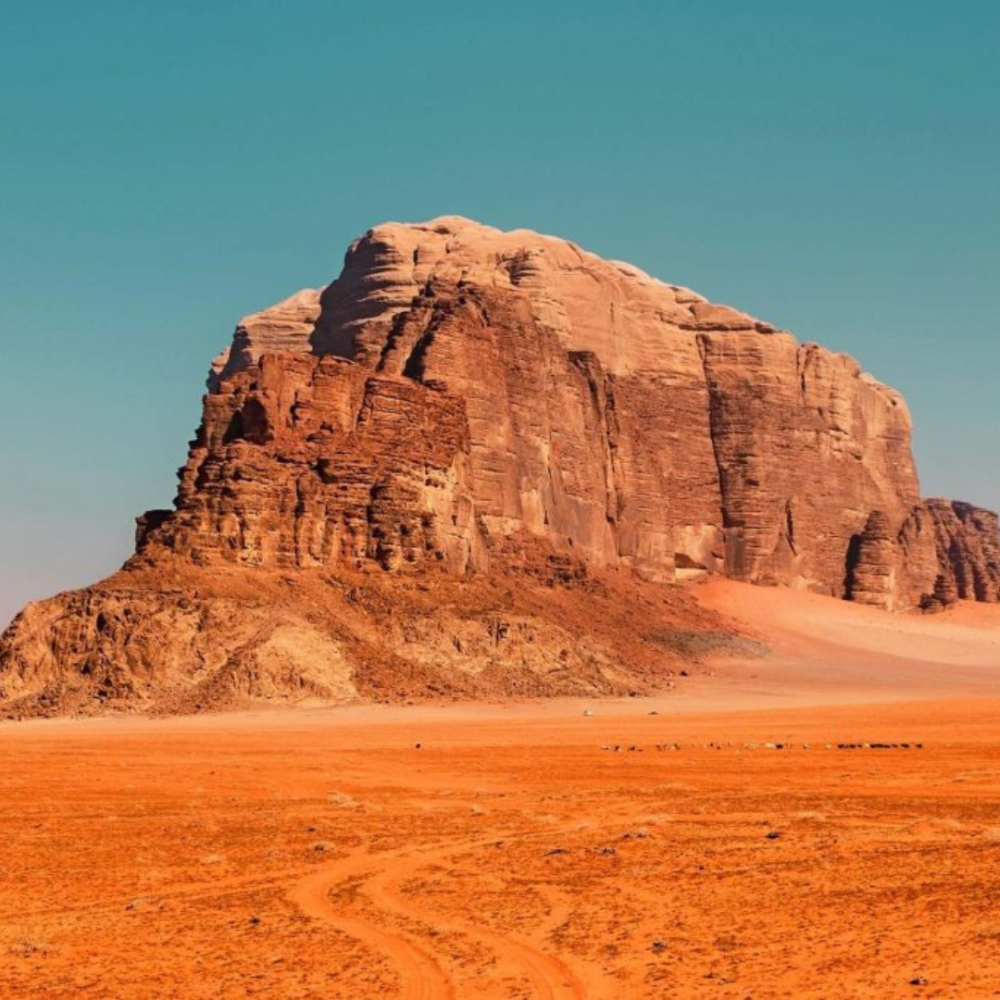
These five peaks represent, each in their own way, the diversity that Asia has to offer adventurers. From the rarefied air of Everest to the tranquil oases of Fuji, passing through ancient volcanoes, impenetrable jungles, and endless deserts, each mountain is a lesson in humility, beauty, and connection with nature. At Top Summits of the World, we believe that every summit conquered is not just a goal achieved, but an inner transformation. If you’re ever wondering where to start your mountaineering journey in Asia, these five peaks are an unforgettable starting point.
OUR LATEST PUBLICATIONS
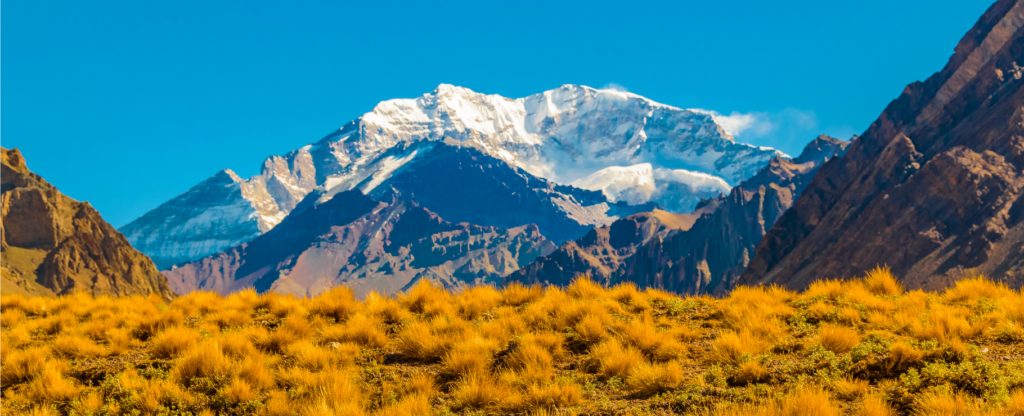
The 5 summits you can’t miss in South America
The most impressive mountains on the continent that every mountaineer must conquer South America is a paradise for mountaineering enthusiasts, with some of the most
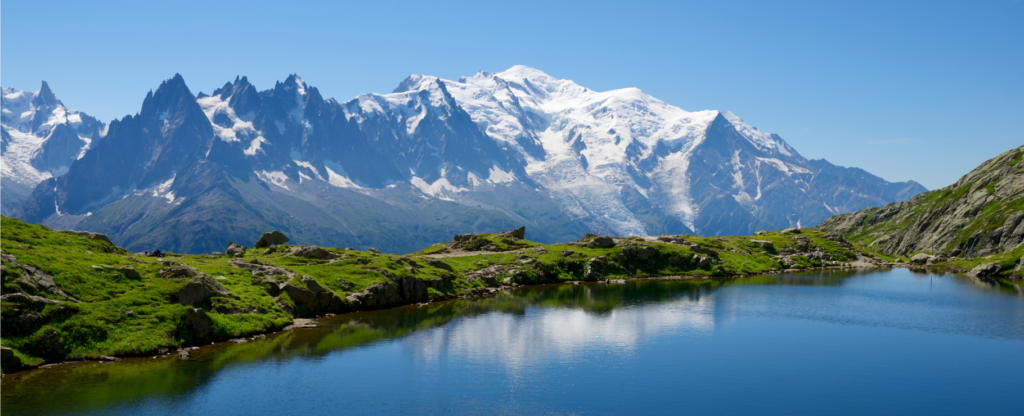
The 5 summits you can’t miss in Europe
Rediscovering Europe from its most emblematic peaks At Top Summits of the World our mission is to climb the highest mountains in each country and
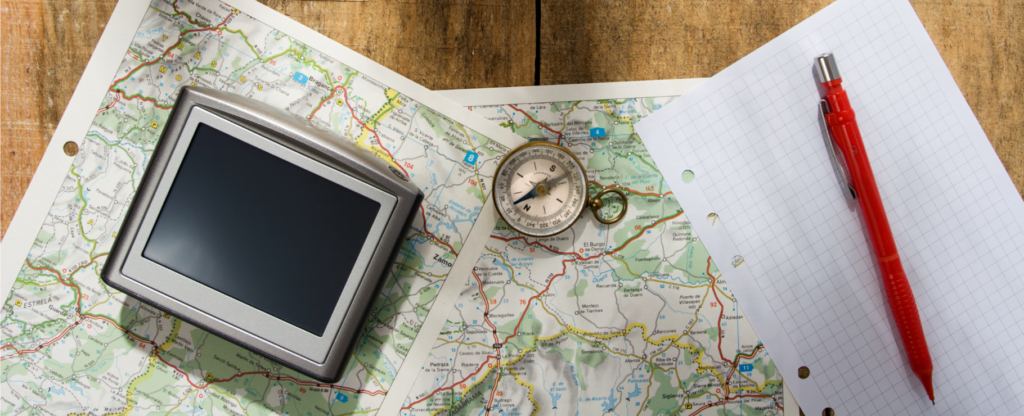
GPS, maps and compasses: Are we losing our sense of direction?
GPS, maps, Wikiloc and other gadgets Before the advent of smartphones, GPS and mountaineering apps, when any hiker made a list of things they couldn’t


